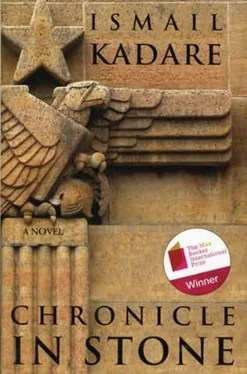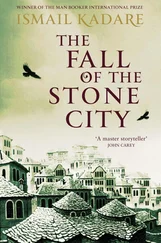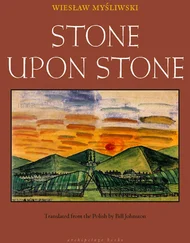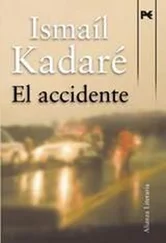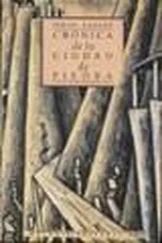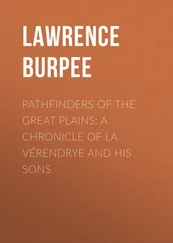Ismaíl Kadaré - Chronicle in Stone
Здесь есть возможность читать онлайн «Ismaíl Kadaré - Chronicle in Stone» весь текст электронной книги совершенно бесплатно (целиком полную версию без сокращений). В некоторых случаях можно слушать аудио, скачать через торрент в формате fb2 и присутствует краткое содержание. Жанр: Современная проза, на английском языке. Описание произведения, (предисловие) а так же отзывы посетителей доступны на портале библиотеки ЛибКат.
- Название:Chronicle in Stone
- Автор:
- Жанр:
- Год:неизвестен
- ISBN:нет данных
- Рейтинг книги:4 / 5. Голосов: 1
-
Избранное:Добавить в избранное
- Отзывы:
-
Ваша оценка:
- 80
- 1
- 2
- 3
- 4
- 5
Chronicle in Stone: краткое содержание, описание и аннотация
Предлагаем к чтению аннотацию, описание, краткое содержание или предисловие (зависит от того, что написал сам автор книги «Chronicle in Stone»). Если вы не нашли необходимую информацию о книге — напишите в комментариях, мы постараемся отыскать её.
Chronicle in Stone — читать онлайн бесплатно полную книгу (весь текст) целиком
Ниже представлен текст книги, разбитый по страницам. Система сохранения места последней прочитанной страницы, позволяет с удобством читать онлайн бесплатно книгу «Chronicle in Stone», без необходимости каждый раз заново искать на чём Вы остановились. Поставьте закладку, и сможете в любой момент перейти на страницу, на которой закончили чтение.
Интервал:
Закладка:
For the society depicted in this novel, the words “Greek”, “Christian” and “peasant” are virtually interchangeable. Only a few words of Greek are known to the child, and this despite the fact that Greece itself is only a few miles from Gjirokastër. When the young revolutionaries Isa and Javer speak in a “foreign tongue” so as not to be understood by the little ones, the language they use is the Latin they learned in school. This is never stated explicitly in the novel because for Albanian readers of Kadare’s generation it goes without saying.
Kadare was a city boy, with no experience of the land, and, as will be seen, without any inclination to discover the countryside at all. In the People’s Republic, and in its official literature imitated from Soviet models, the life of agricultural workers was a conventional object of praise. The refusal of the little boys in this novel to entertain even the idea that “peasants’ work” might be purposeful or comprehensible or anything other than a sham may strike us now as comical, but in Hoxha’s Albania it must have felt like a daring provocation.
One of the most important events in the life of the narrator as told in Chronicle in Stone is the encounter with Shakespeare’s Macbeth . The underlying material of that play – not just ghosts, witches and murder, but the dynamics of the struggle for power, the ineradicable nature of a crime committed, and the inexcusable flouting of the rules of hospitality – run through Kadare’s entire work. In The Concert , one of Kadare’s masterpieces, there is even a full proposal for a new version of Macbeth , the better to account for the death of Lin Biao, Mao Tse-Tung’s designated successor. Kadare’s explorations of the ancient Albanian rule of the blood-feud in novels like Broken April are also implicit meditations on Macbeth’s true crime, the breaking of the besa which grants guests protection from harm.
Chronicle in Stone is full of other plot-lines and story-fragments that will grow into a whole range of works set in varied times and locations. The legend of Ali Pasha of Tepelena, a local potentate (in whose court Lord Byron stayed for a time) whose severed head was exhibited in Istanbul, is recounted indirectly in Chronicle in Stone , but forms the explicit subject of Kadare’s later novella, The Nook of Shame . The brief mention of the prostitute killed by Ramiz Kurti sends the reader back to The General of the Dead Army , where a fuller account of this honour killing is given. In other places we come across the fear of blindness, suggesting the matter of a later story, The Blinding Order ; a book of dream interpretation, hinting at the magnificent fantasy of The Palace of Dreams ; and pyramids of skulls – be they ascribed to Genghis Khan or to Timur the Lame – recur in stories as varied as The Pyramid (set in Ancient Egypt) and The Great Wall , set in China of the late medieval period. Even the outline of the bridge that requires a sacrifice to stay above the water – the subject of The Three-Arched Bridge - can be found in an aside in the thoughts of one of the characters in Chronicle in Stone . Not quite all of Kadare’s work is inscribed in the stone city of Gjirokastër, but the strong images of his childhood – Macbeth , slaughter, severed heads, propitiatory sacrifice, the instability of words and sounds, and the battle of wind and rain – are the stuff out of which much of his later works are made.
Chronicle in Stone was translated into English by Arshi Pipa, an Albanian intellectual who was imprisoned in the early years of the Hoxha regime. He escaped, fled to Yugoslavia, then to Italy, and finally to the United States. A distinguished scholar of medieval Italian literature, Pipa was for many years Professor of Romance Languages at the University of Minnesota, but he also remained passionately committed to the fate of his homeland, and wrote many articles and books about Albanian literature in the Communist era. Initially, he was an ardent supporter of Kadare, in whom he saw not only a remarkable writer, but a cunning critic of the Hoxha regime. He undertook the translation of Chronicle in Stone in order to make Kadare better known in the West. Pipa’s English was naturally Americanised, given his long residence in the USA, but he found a publisher for his work in the UK. The publisher’s editor made numerous changes to Pipa’s text, not only in order to impose British conventions on the text, but also to improve its fluency. Unfortunately Pipa took exception to the editing done to his work, and an increasingly acrimonious correspondence ended with the translator disowning his own work and requesting his name to be removed from the published book.
Pipa was also very angry that his own long introduction to the book was cancelled. Later published in an American journal, Pipa’s essay is both hugely informative and more than slightly paranoid. He notes that the Gjirokastër that Kadare recalls is a city peopled by a curiously large number of sexual deviants, including a “woman with a beard” (which he takes to mean a lesbian), a homosexual husband and a hermaphrodite, and it is also a city in which many crimes are committed in connection with sex – a girl probably drowned in a well for kissing a boy she was not engaged to, a half-man, half-woman murdered in his bed for daring to get married, a prostitute murdered by the father of one of her clients for bringing dishonour on the family. Gjirokastër is also, famously, the home town of Enver Hoxha, the country’s dictator, and this is made quite explicit in the text. Pipa argues that the depiction of the city is intended “by distant reflection” to raise the question of Hoxha’s sexuality. Like most members of the Albanian elite, Pipa and Kadare both knew that in his youth (and in particular during his many years as a student in France) Hoxha had had homosexual encounters, but this was not something that could be written or spoken aloud in Communist Albania. Kadare was horrified when he heard that Pipa planned to assert that Chronicle in Stone contained a coded message about the sexual preference of the country’s Guide. He honestly thought that Pipa wanted to get him arrested and shot. A long drawn-out polemic ensued, with attack bringing counterattack, until the whole murky business became known as the “Pipi-Kaka Affair”. It is no longer remotely dangerous to mention the probable sexual proclivities of a long-dead Stalinist – but it also now seems crazy to believe that this fine and complex novel contains any coded message on that subject.
Pipa’s translation is the basic text of this edition of Chronicle in Stone . To Pipa’s work I have added the passages included by Kadare in Volume V of his Complete Works in French, and deleted the passages that Kadare dropped. I have nonetheless retained the Albanian forms of the names of people and places (in the French edition, names are spelled in French transliteration) and I have not adopted the transpositions made by the French text of some of the historical and political references (turning “Ballists” into collabos , for example). I have also made stylistic amendments here and there where they seemed called for. For the most part, however, this English version of Chronicle in Stone is Arshi Pipa’s, and to him the main credit is due.
Gjirokastër really is quite as spectacular as the description of it given in this novel. It has been in decline as an administrative and commercial centre throughout the twentieth century, and many of its large stone houses have been uninhabited for decades. In 1967, all religion was abolished in Albania, and most of the country’s churches, monasteries and mosques were destroyed or put to other uses. At the same time, the regime sought to create and fortify the “national spirit”, and to celebrate the country’s more or less ancient traditions. Despite Hoxha’s ambivalent feelings about the Ottoman heritage of his home town, he saved the city’s mosque, and also had Gjirokastër officially designated as a “Museum City”. It became an important centre of folk culture in socialist Albania, and was chosen to host the National Folk Festival, which was held there every five years. In 2005, after several failed bids, Gjirokastër finally became a UNESCO World Heritage Site.
Читать дальшеИнтервал:
Закладка:
Похожие книги на «Chronicle in Stone»
Представляем Вашему вниманию похожие книги на «Chronicle in Stone» списком для выбора. Мы отобрали схожую по названию и смыслу литературу в надежде предоставить читателям больше вариантов отыскать новые, интересные, ещё непрочитанные произведения.
Обсуждение, отзывы о книге «Chronicle in Stone» и просто собственные мнения читателей. Оставьте ваши комментарии, напишите, что Вы думаете о произведении, его смысле или главных героях. Укажите что конкретно понравилось, а что нет, и почему Вы так считаете.
